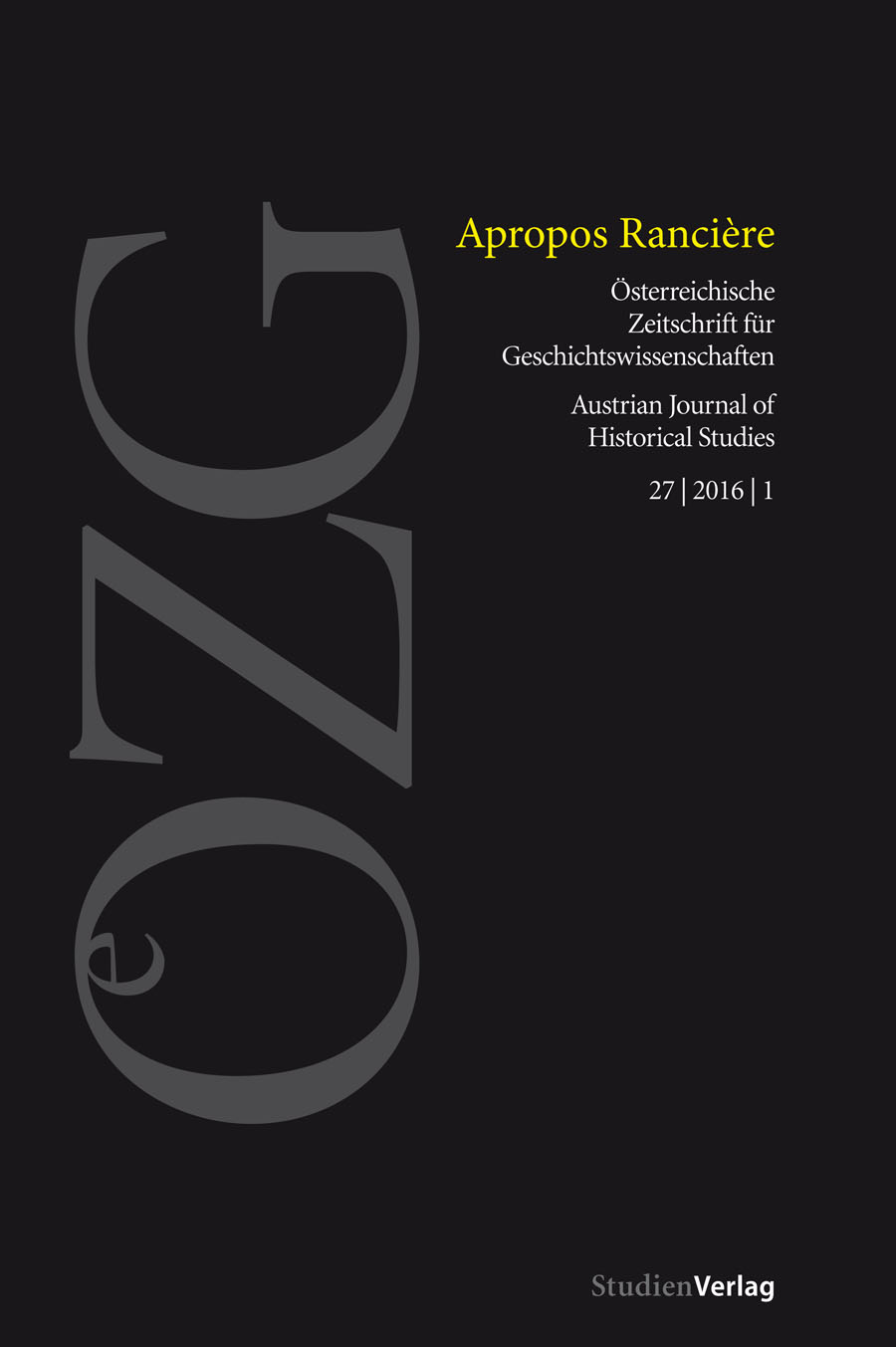Eine Ästhetik der Unschärfe
Jacques Rancière und die Aufteilung des Sinnlichen zwischen Logos und Pathos
DOI:
https://doi.org/10.25365/oezg-2016-27-1-8Schlagworte:
aesthetics, history, image, mimesis, photography, simulacrumAbstract
The photographer Hiroshi Sugimoto decided once to push his camera’s focal length to twice-infinity while shooting urban landscapes. He interpreted the resulting blur as an erosion-test of modernity that would only be survived by the super large buildings of architectural landmarks. His related series “Architectures” serves as the analytical a erimage for reflecting on Jacques Rancière’s concept of the Distribution of the Sensible and his aesthetic-political thought. This article discusses key elements of his theory in opposition to Sugimotos very own visual interface between politics and aesthetics, exposing a problematic and romantic lack of technicality and mediality in Rancière’s tableau of visual regimes. Serving also as a retrospective on what has been an ongoing conversation with Siegfried Mattl about Jacques Rancière, aesthetics, cinema, photography, romanticism and liberty this text remains necessarily indecisive since the colloquist has sadly passed away recently.


